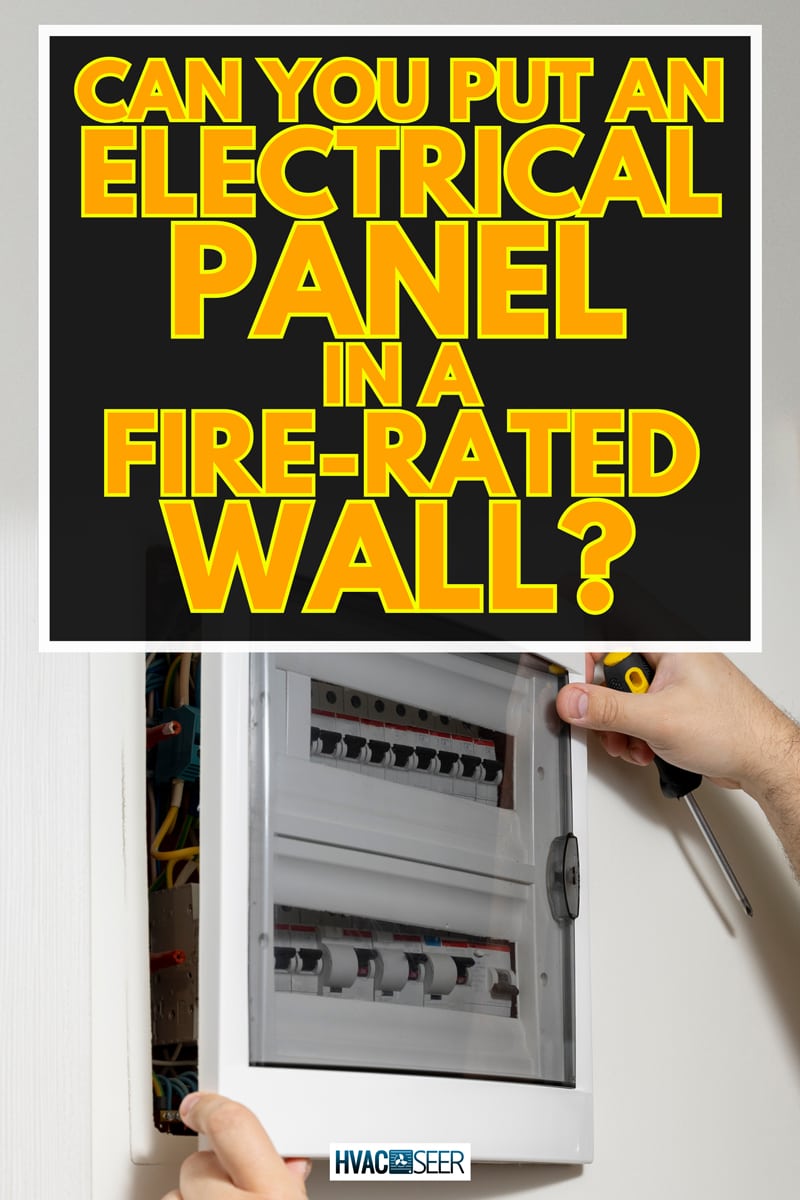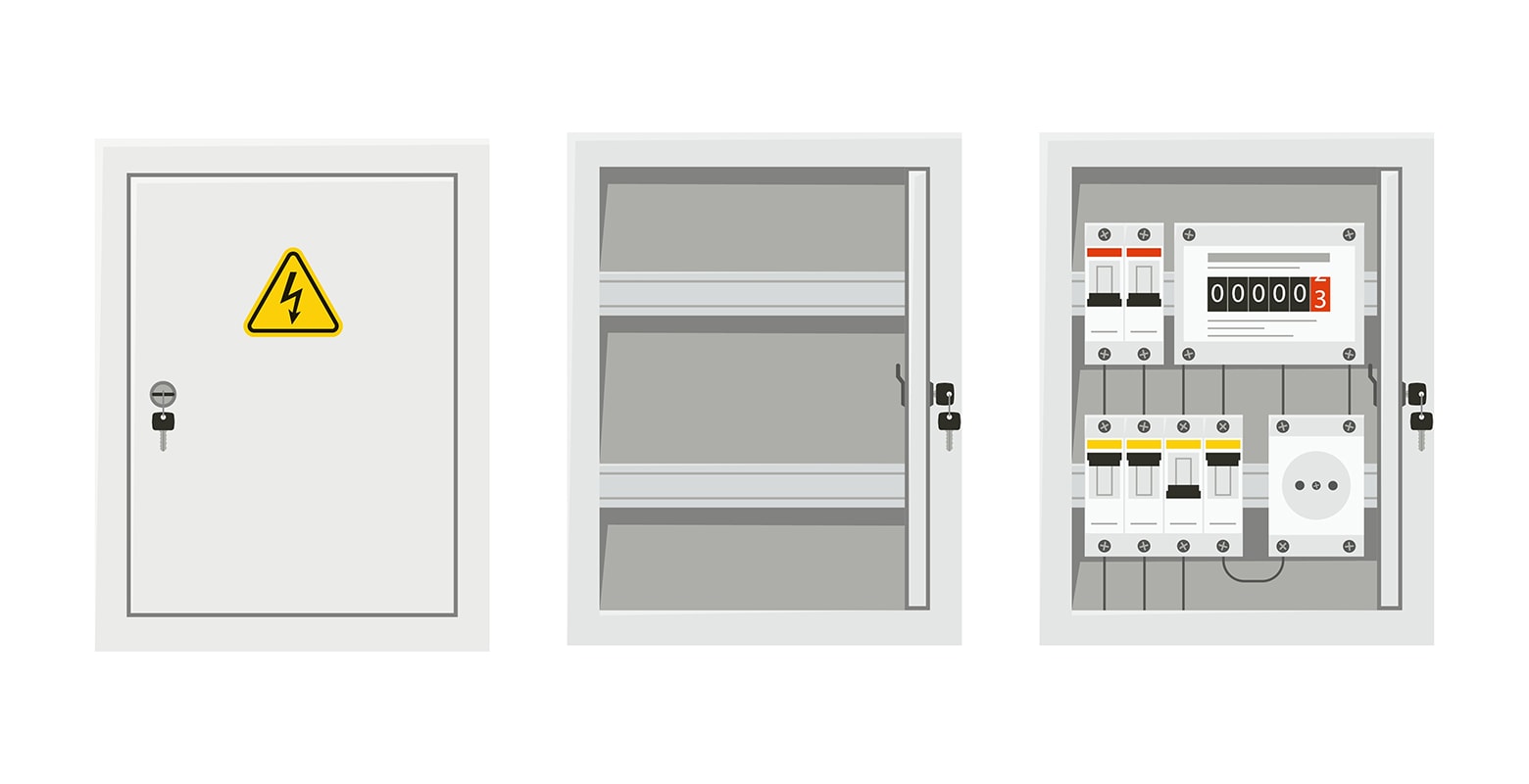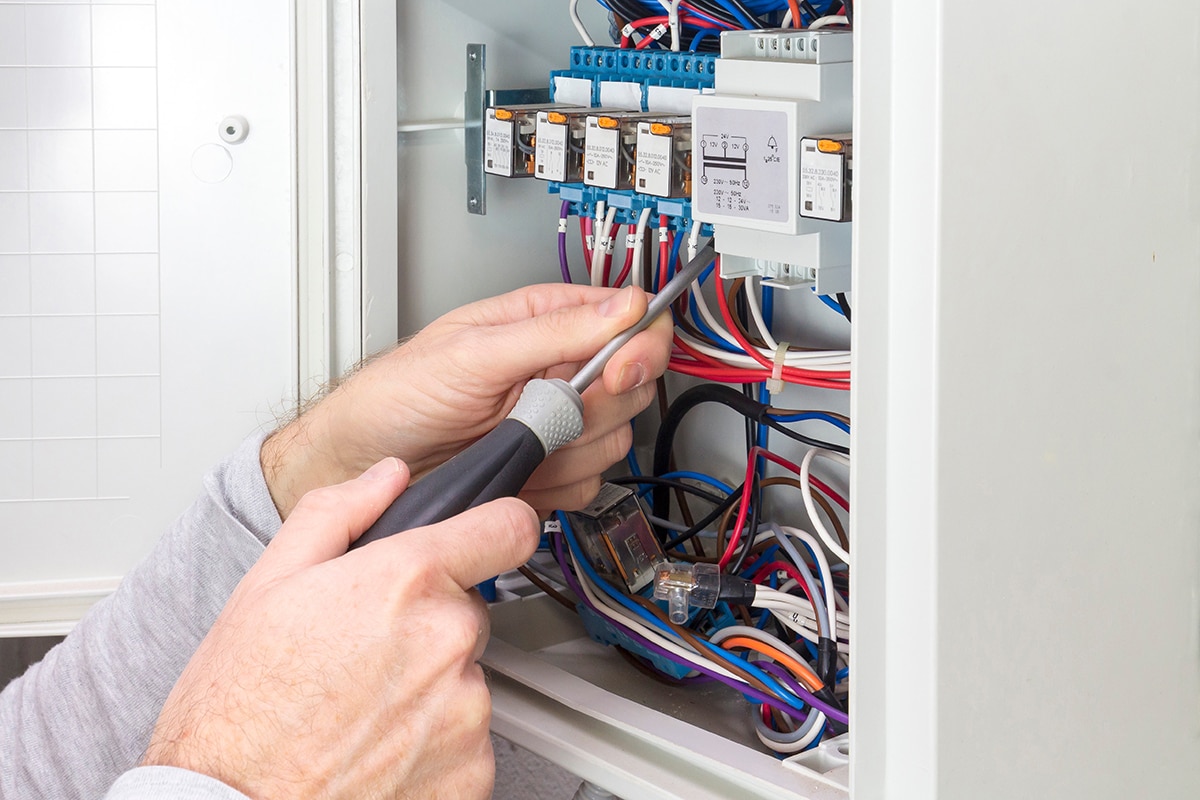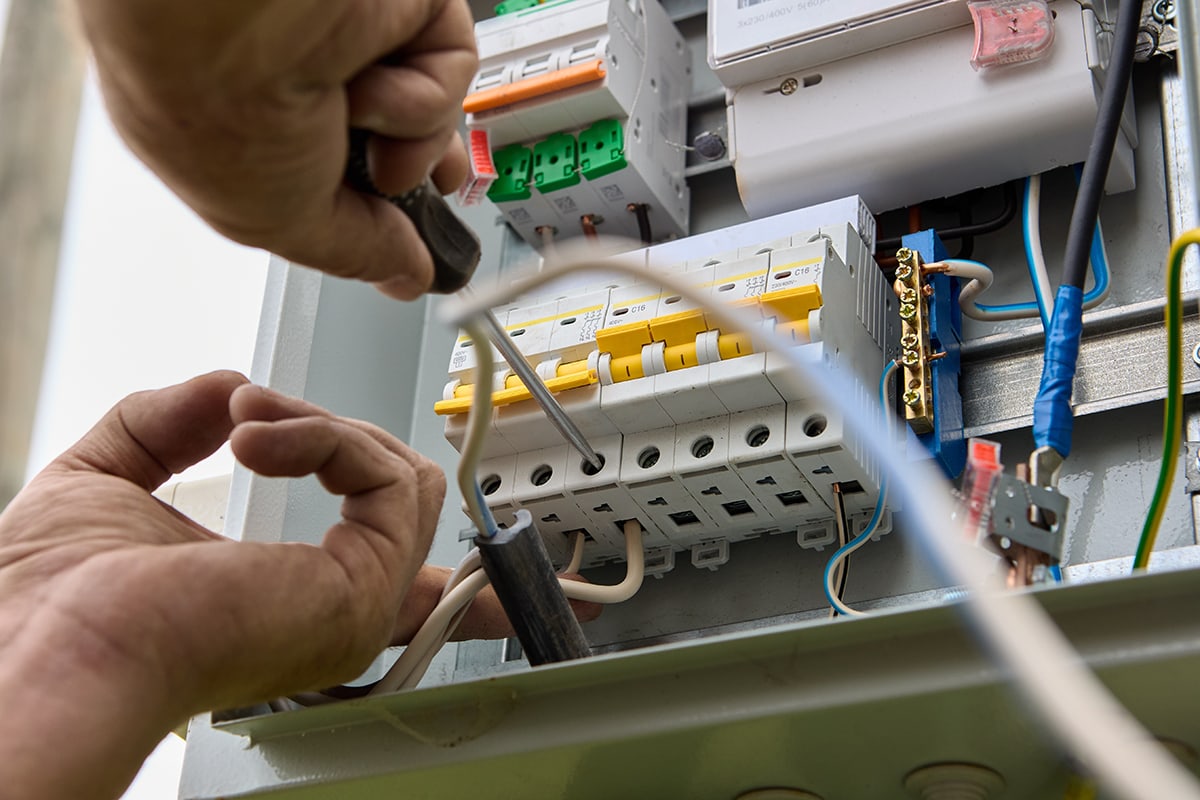Installing an electrical panel can be complicated if you're working with a fire-rated wall. You may wonder if it's okay to put an electrical panel in a fire-rated wall. We've researched this question and have an answer for you.
You can put an electrical panel in a fire-rated wall, but it requires careful planning and installation to guarantee that the fire rating of the wall is not compromised.
In this article, we will explore the installation of an electrical panel in a fire-rated wall and provide guidelines and best practices to help prevent electrical mistakes. So, if you're planning an electrical panel installation in a fire-rated wall or are just interested in learning more about this topic, continue reading to understand the process and its importance in ensuring building safety.

Can You Install An Electrical Panel In A Fire-Rated Wall?
Installing an electrical panel in a fire-rated wall is possible, but you will have to obey local building codes and fire safety regulations. You must use approved methods to maintain the wall rating. Following the requirements in installing electrical wiring is crucial to avoid electrical mistakes and hazards.

What Are The Requirements For Installing An Electrical Box?
Here are the requirements for maintaining the integrity of a fire-resistant wall when installing an electrical box:
- Use an electrical box designed for fire-rated walls (1-2 hours) and comply with local codes and regulations. Further study is needed for fire-rated walls higher than 2.
- Install the electrical box in a manner that maintains the fire rating of the wall. Maintenance may include using fire-rated putty pads or other fire-blocking materials around the box.
- Maintain proper space around the electrical box to prevent contact with combustible materials or other hazards.
- Avoid back-to-back installation of outlet boxes or make a thermal shunt through the wall.
- A 24" offset is required if installed outlet boxes are on the wall's opposite sides. Protective material is needed if the outlet boxes are closer together.
- Ensure all electrical wiring and components have been seated correctly and comply with local codes and regulations.
- Label the electrical box with appropriate warning labels and identification markers.
- Consult with a qualified electrical contractor or engineer before installing an electrical box in a fire-rated wall for proper requirements and guidelines.
Visit the National Fire Protection Association (NFPA) for electrical installations and guidelines, including requirements for installing electrical boxes.
Watch the video for more details about the requirements for installing an electrical panel in a fire-rated wall.
How To Install An Electrical Panel In a Fire-Rated Wall

Here are the general steps for installing an electrical panel in a fire-rated wall:
Determine The Location
The foremost step in installing an electrical panel in a fire-rated wall is to determine the panel location. The panel location should comply with local building codes and regulations and not compromise the wall's fire rating.
Cut An Opening
After determining the location, cut an opening in the fire-rated wall for the electrical panel. The panel opening should be slightly larger than the panel itself to allow for installation.
Install The Panel
Install the electrical panel into the opening of the fire-rated wall. Use appropriate fasteners and brackets to secure the electrical panel to the wall.
Seal The Opening
After installing the electrical panel, seal the opening around the panel box with fire-rated caulking or another approved sealant. This step will help to maintain the wall's fire rating and prevent the spread of fire.
Label The Panel
Finally, label the electrical panel with appropriate warning labels and identification markers. Labeling will ensure that the electrical panel is easily identifiable and help carry out easy maintenance or repair.
Watch the video for more details on installing an electrical panel in a fire-rated wall.
What Firestop Materials Are Used In Electrical Panel Installations?

Here are the different types of firestop materials used in electrical panel installations:
Caulks And Sealants
These materials fill gaps and voids around electrical boxes and cables. These fillings can fit around irregular shapes. Examples of firestop caulk and sealants include silicone, acrylic, and intumescent sealants. You can use a caulking gun tool to apply firestop caulks and sealants.
Click here to see this firestop sealant on Amazon.
Putty
Firestop putty is a pliable, moldable substance for sealing small gaps and openings around electrical boxes and cables. Putty can mold to fit irregular shapes.
You can apply firestop putty using your hands. Examples of firestop putty include silicone putty and intumescent putty. Firestop putty comes in pads and sticks.
Click here to see this putty on Amazon.
Pillows
These pre-formed pillows have fire-resistant materials designed to fit snugly around electrical boxes and cables. Firestop pillows are inserted into the opening and are easy to remove. Examples of firestop pillows include mineral wool and intumescent firestop pillows.
Click here to see these firestop pillows on Amazon.
Wrap Strips
These strips are for wrapping around electrical cables and penetrating through fire-rated walls. Firestop wrap strips are fire-resistant materials for sealing around wire cables and preventing fire spread. Examples of firestop wrap strips include intumescent wrap strips.
Check out these wrap strips on Amazon.
Firestop Barrier Composite Sheet
This sheet is perfect for protecting cable trays and conduits. The hard char material protects against smoke, flame spread, and toxic gasses.
Check out these composite sheets on Amazon.
It is crucial to select the appropriate firestop material based on the installation type and the level of fire resistance required. A qualified contractor familiar with local codes and regulations should install firestop materials.
Electrical Wiring Mistakes To Avoid
Electricity is an essential part of our everyday lives, but it can also be dangerous if not correctly handled. Electrical mistakes can lead to electrical shock, fire, or even death. Here are some of the most common electrical mistakes and ways to avoid them:
Overloading Circuits
Overcrowding the electrical panel with too many circuits or wires may lead to overheating, which causes damage to the electrical panel and raise fire risk. Use a power strip with a circuit breaker or spread devices across different circuit wiring.
Not Using GFCI Outlets
Ground Fault Circuit Interrupter (GFCI) outlets protect against electrical shock and are necessary for areas with water, such as kitchens and bathrooms. Install GFCI outlets to prevent the severe risk of electrocution and electrical shock.
Using Extension Cords Improperly
Extension cords should be used only for the short-term and not as a permanent solution. If you keep an extension cord connected to a power source, the device will still receive electricity and may result in overheating device malfunctions or even fire hazards. Install additional outlets as much as possible.
Improper Grounding
A common mistake is not properly grounding the electrical panel, which can result in electrical shock or even a fire. Follow local codes and regulations when installing the grounding wire.
DIY Electrical Work
Hire a qualified electrician and follow local codes and regulations to avoid these common errors and guarantee a safe and functional electrical panel installation.
Failure To Label Circuits
Failure to properly label circuits can make it hard to troubleshoot electrical problems and dangerous if someone needs to turn off power to a specific circuit in an emergency. Label all circuits and make sure the labels are accurate.
Damaged Electrical Cords
Damaged cords and old cords can cause electrical shock or fire. Replace the damaged ones with new ones immediately.
Old Electrical Systems
Old electrical systems can be dangerous and may not meet current codes. Talk to a professional electrician to upgrade to a new electrical system.
Wrapping Up

Installing a DIY electrical panel in a fire-rated wall is possible but requires proper planning and following guidelines to maintain fire integrity. As mentioned above, ask a professional electrician for further assistance if you are not familiar with electrical work.
In this post, we also discussed topics related to electrical panel installation, including firestop materials, types of fire-rated walls, and common mistakes to avoid fire hazards.
It is vital to be aware of common electrical mistakes, including overloading circuits, not using GFCI outlets, and DIY electrical work, as they can lead to hazardous situations. You should prioritize safety and follow guidelines to prevent electrical hazards in your home.
Please visit the posts below for more information and knowledge on electrical safety:
Water Pipes Above Electrical Panels: Is It Safe? What You Need To Do
Does An Electric Fireplace Need A Dedicated Circuit?





